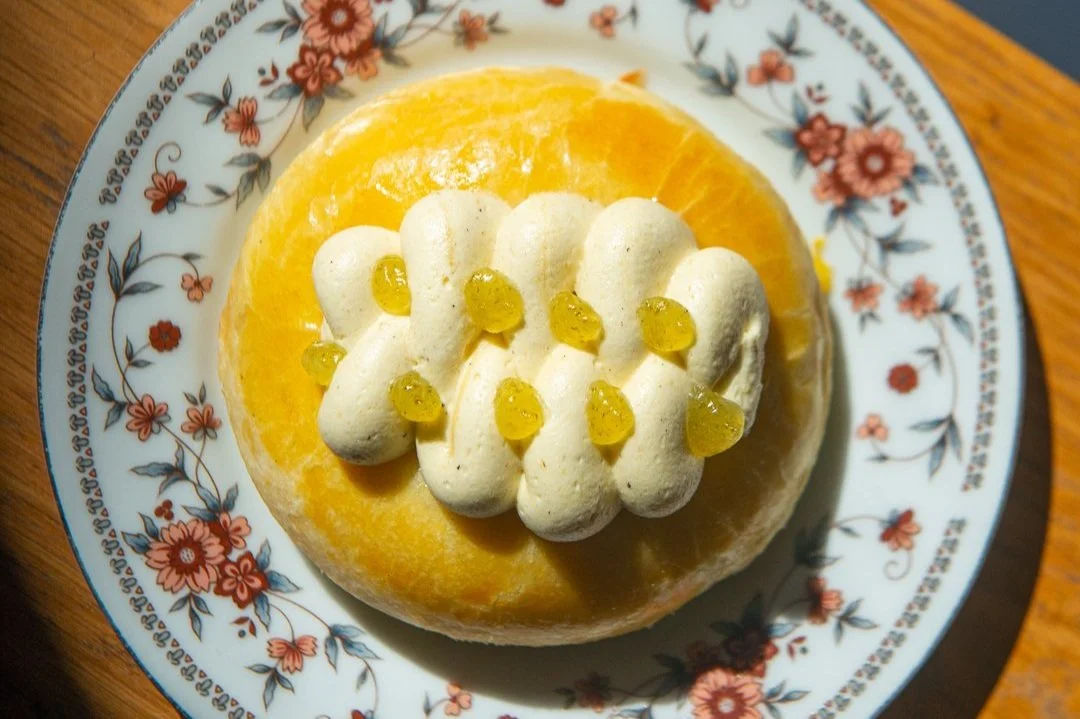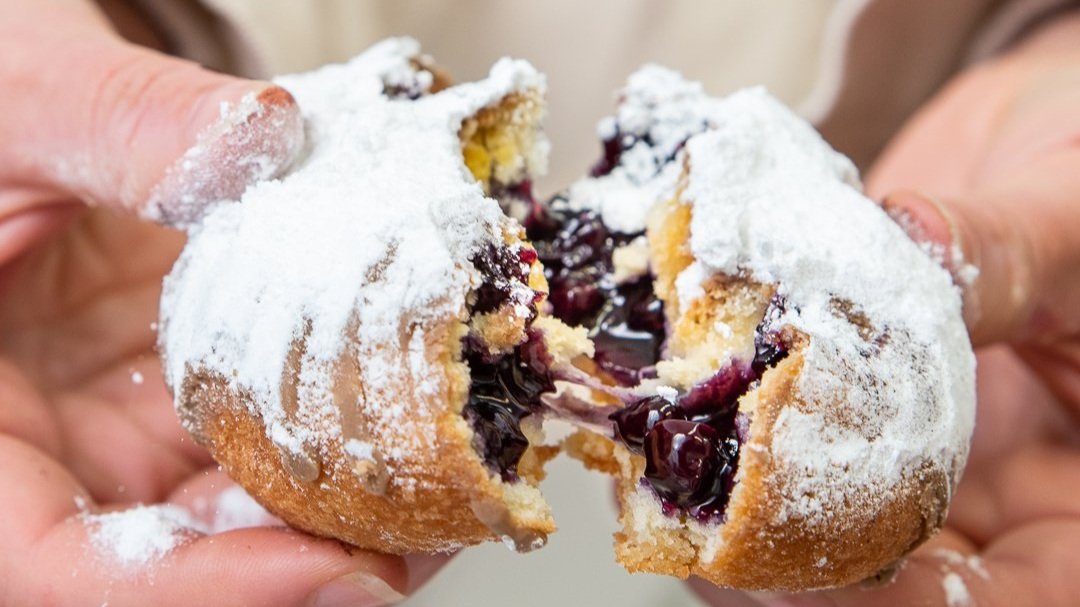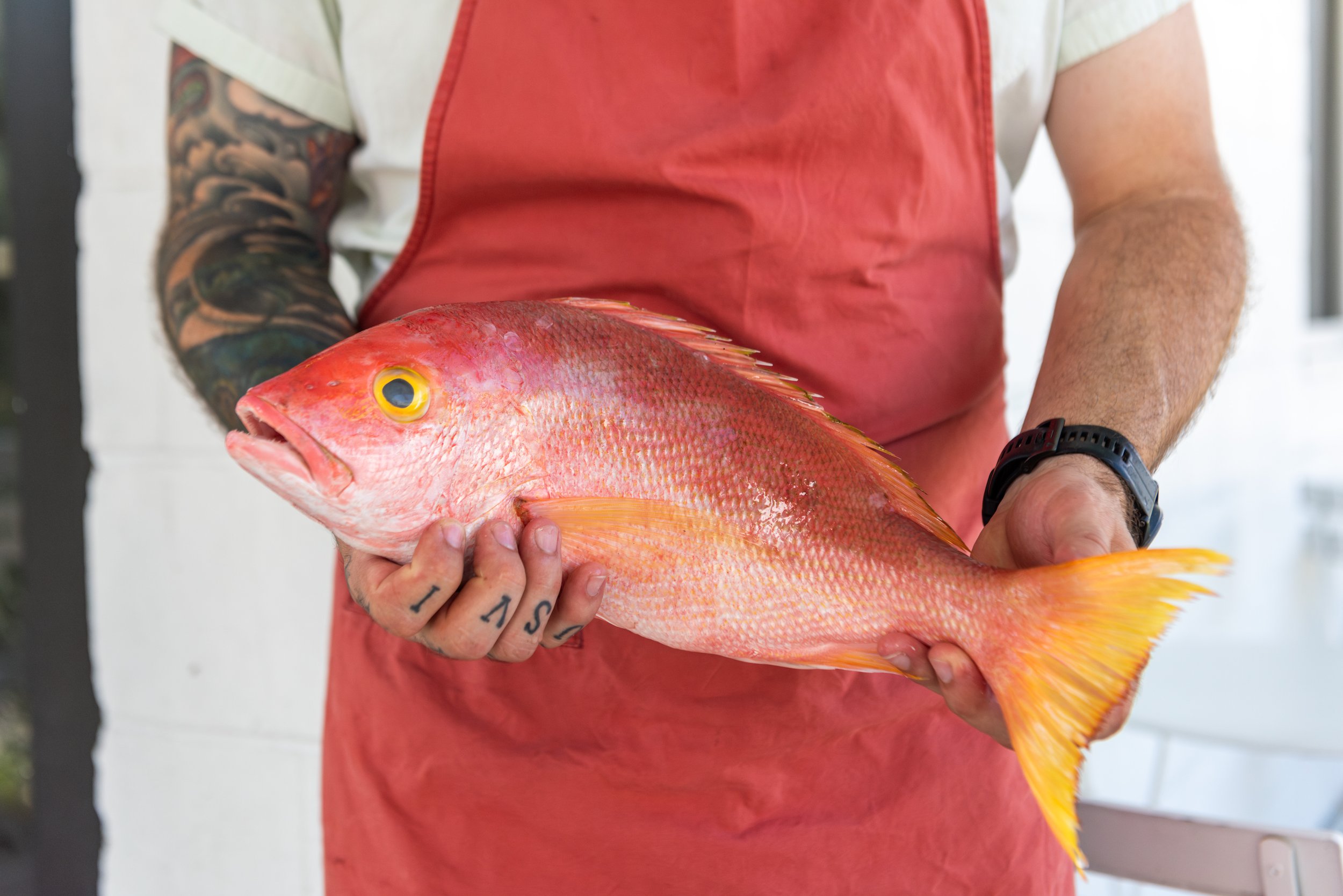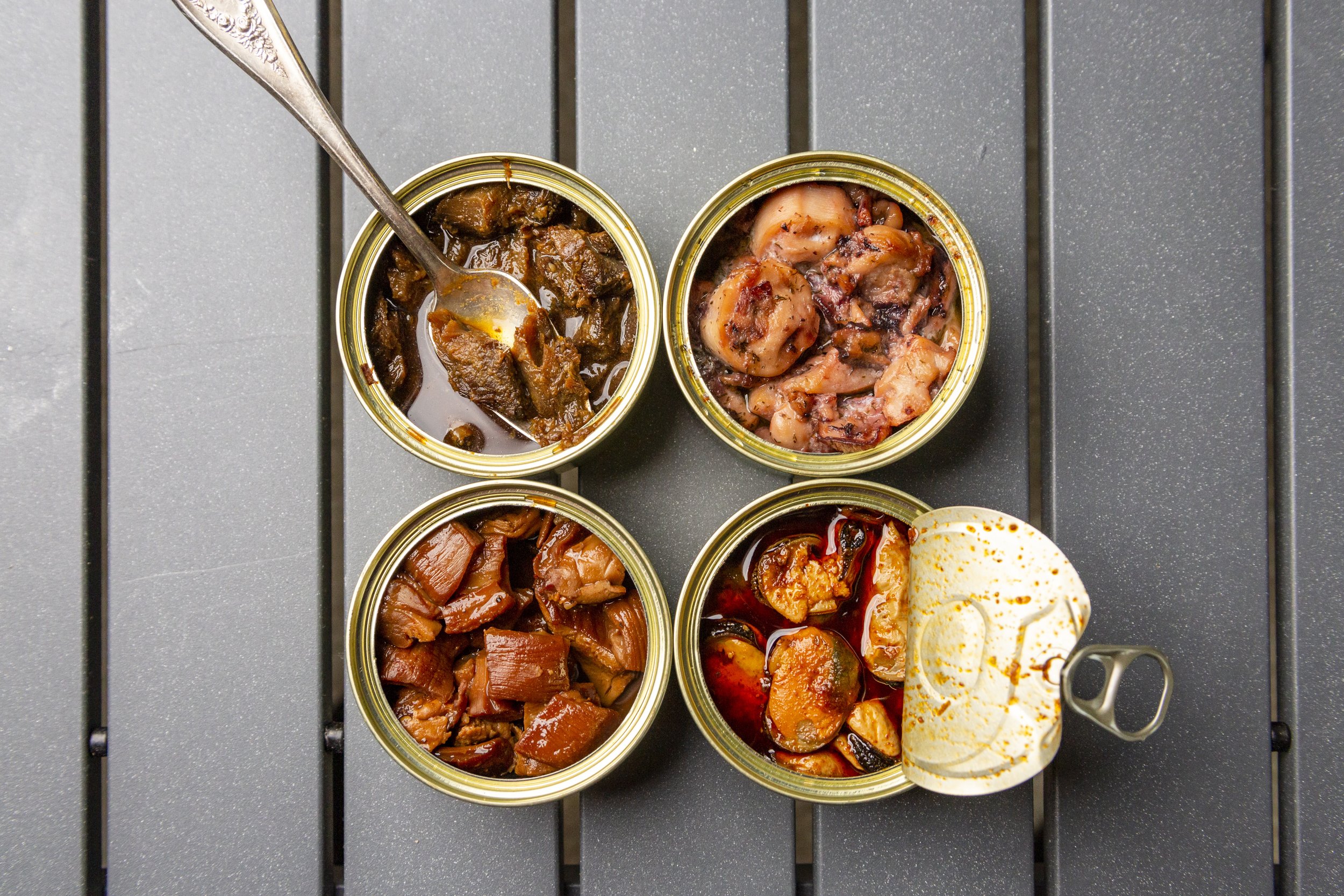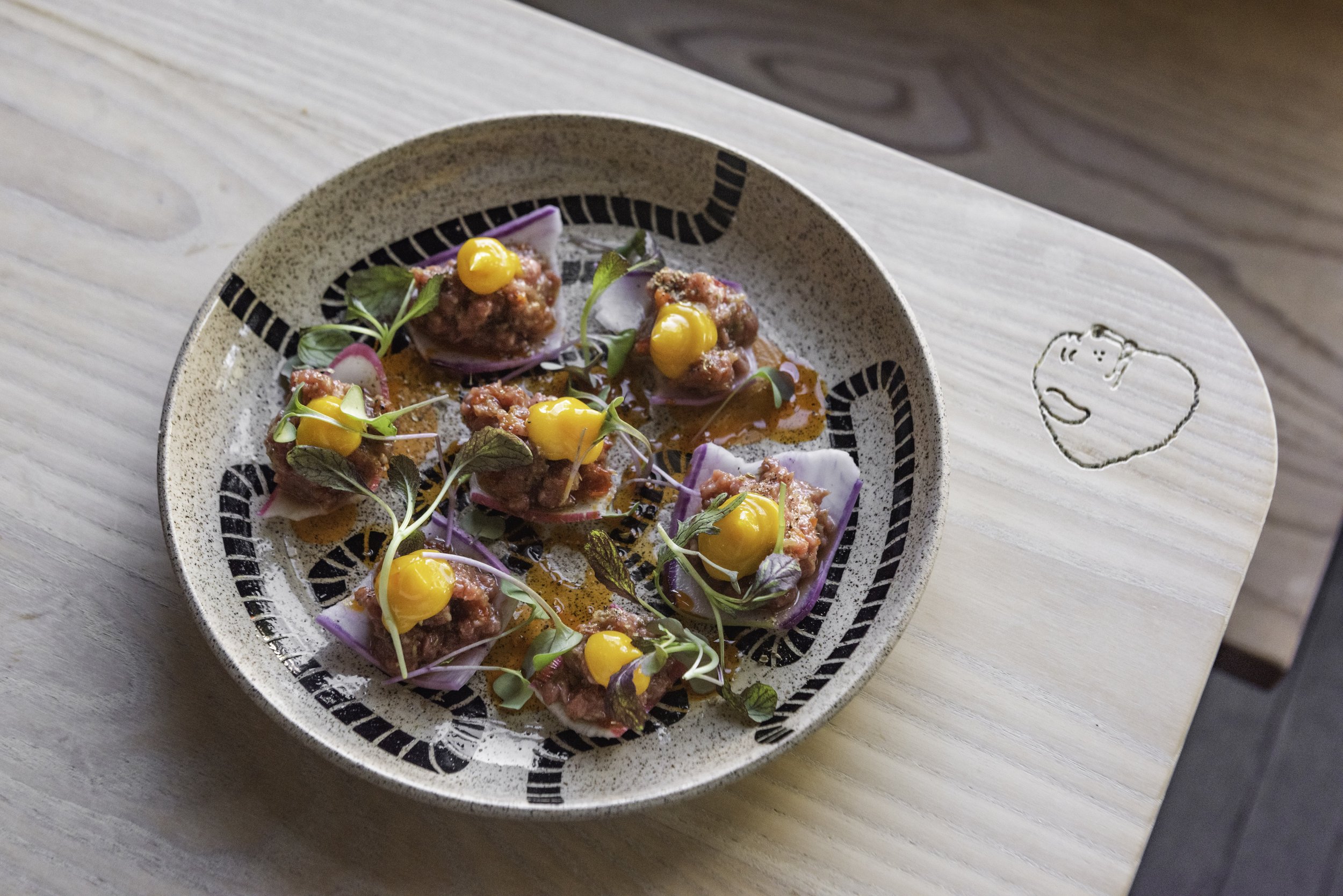Interchangeable Parts
Chefs and pastry chefs across Chicago expand their definition of "cross-utilization" in their kitchens.
Illustration: Danie Drankwalter
Challenged by ongoing labor shortages after a global pandemic and lockdowns, chefs and restaurateurs are tasked with doing more with less. This led to slimmed-down menus and an expanded definition of “cross-utilization.” The use of culinary interchangeable parts takes things one step further, focusing on a house-made item that can be applied to multiple dishes—just like Industrial Revolution manufacturers realized they could speed production by using type parts for a wide array of products. What might have started as a reaction to an economic crisis has lasting benefits, including labor and food cost savings. Even better, diners don’t seem to miss those lengthy menus or extra dish components of pre-pandemic times. Perfecting one versatile component then using it over and over again is the new name of the game.
Felicia Mayden’s croissant Pop-Tart with Mixed Berry Jam, and Vanilla Icing
mindy gohr’s Brioche Roll, Mango Lekvár, Coconut Custard Cream, and Lime
Andrew Catrambone’s Blueberry Pancake: Maple Cake Doughnut, Blueberry Jam, Powdered Sugar
SWEET
Pastry Chef Felicia Mayden of Ace Hotel Chicago uses her croissant dough for a range of handmade pastries. “When the pandemic hit, we looked for ways to maximize menu items and started with the bread and bakery program,” Mayden says. Much to the enjoyment of her regulars, the croissant dough has now become the basis for everything puff, taking on different shapes and flavors.
Compared to tangy sourdough, Mayden says laminated dough—when the lamination is spot-on—is a great blank canvas that can be used for croissants, of course, but also pie crust, bear claws, and a grown-up Pop-tart. Making the dough in-house allows Mayden to control the process and store it for other uses.
Pre-pandemic, the longstanding Bittersweet Pastry Shop & Café had a huge section of dessert offerings and uncountable flavor combinations. For a nimbler menu, Pastry Chef and Managing Partner Mindy Gohr maximizes her brioche dough as an interchangeable part. She typically folds in a fruit of some sort—most recently, she used mango lekvar, lime agar, and coconut pastry cream (also used for a coconut cream pie).
“Cross-utilization really helps with bottom line,” Gohr says. “I feel a strange sense of guilt saying this, but the pandemic has provided the opportunity for us to slow down, reprioritize, and work on streamlining.”
At Beacon Doughnuts, Co-Founder and Executive Chef Andrew Catrambone gained efficiencies by using the same two doughnut bases for the 12 flavors that are on the menu at any given time, but he and his team add toppings and flavor infusions throughout the week.
“We do small-batch Mondays and Wednesdays and make half the menu and then Tuesday do the same thing and make the other half of the menu,” Catrambone says. Flavors like lavender vanilla and blueberry pancake have been met with high demand.
Chef Tim FLores of Kasama’s Filipino Breakfast with Longanisa, Tocino, Fried Egg, Garlic Fried Rice, and Pickled Green Papaya
Chef Cam Waron of Honey Butter Fried Chicken’s Buffalo Mac ‘N Cheese: Rotini, Pimento, Wisconsin Cheddar, Fried Chicken, Honey Buffalo Sauce, Fried Crunchies
SAVORY
Filipino sausage is an interchangeable part that’s helped Rising Star Chef Tim Flores of Kasama maximize his menu. Longanisa is traditionally served at breakfast but shows up in a variety of places on the menu. Drawing from his heritage, Flores spent two years testing and perfecting the recipe. The sausage stars in a Filipino breakfast plate of garlic-fried rice, fried egg, pickled green papaya, cilantro, and tocino. Kasama also served a barbecue platter with longanisa, tocino ribs, white bread, and pickles and the Chicago-inspired Italian combo sandwich. In this case, longanisa and shaved pork adobo are stuffed into a French loaf and topped with spicy giardiniera.
Cam Waron, culinary director at Honey Butter Fried Chicken, says that during the coronavirus, his team decided that if an ingredient wasn't being used in multiple ways, it got cut. When preparing his famous candied jalapeño mayo, Waron saves the candying liquid for a signature margarita. Likewise, schmaltz is a house staple that’s used in many dishes, like a smashed potato side with rosemary-infused gravy. “Schmaltz is a good secret ingredient, and we can use it in place of butter,” says Waron, who extracts the fat while rendering chicken scraps and bones for stock-making, so waste is minimized.
Honey buffalo sauce is yet another key component that is featured in various dishes, including the honey buffalo sandwich with fried chicken, blue cheese, and giardiniera and in the buffalo mac and cheese with diced-up leftover fried chicken pieces and fried crunchies (those excess bits of fried dredge). Again, lots of chicken cross-over, little waste. “We slimmed down our menu quite a bit,” he says. “We need to get two uses out of everything, or it doesn't stay on the menu. We figured out what we were good at and ran with that. It forced us to be laser-focused on offerings.”



